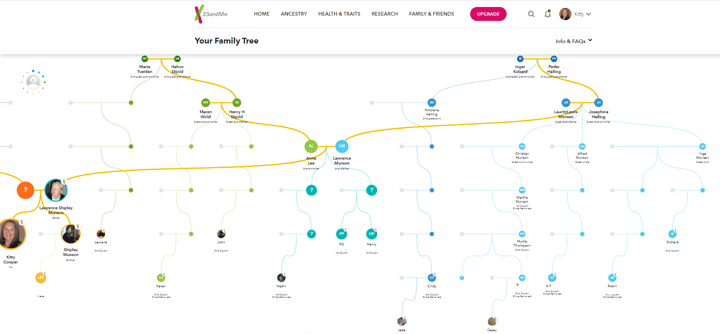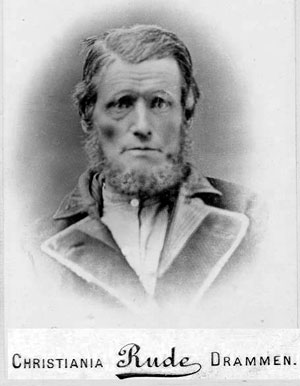The dream of every genetic genealogist is to be able to build a family tree from just DNA. 23andme made a terrific start on this with their Beta family tree released in October. Now it is out of test mode and they have added good editing facilities. Being slightly obsessive, I tried it out with almost everyone whose login I have (my family and many friends and clients).
I find it useful to fill in the names of my ancestors and the child from which my cousins are descended. On my own tree I was able to remove an incorrect generation turning a 3rd cousin into a 2nd cousin. I also like the compact display with nodes for each ancestor and the ancestors of tested relatives. Click here for an excellent and detailed help document at 23andme.
Major missing features are 1) no ability to export the tree and 2) no capability to share it with family members. Those are big drawbacks for serious genealogists like me. The other problem is that I cannot figure out how to get it to recalculate a tree although the documentation refers to that a number of times.
The family tree that 23andme builds from your DNA relatives only includes those who have opted into open sharing or those with whom you have “connected” via that button on their match page. According to the documentation there is a limit as to how many people you can have in a diagram plus the initial trees are built from your closest 20 matches. You can add people to the tree and there seems to be a provision for new relatives going into a side box and getting added from there. I did not see any cases of that.
My Norwegian Dad’s tree is completely accurate. The right side has just relatives on his mother’s tree and left his father’s. I have figured out or been in touch with all his listed matches. The only one I cannot vouch for is a woman who, based on her other family matches, has a different great grandfather from the one on record (it seems to have really been one of my grandfather’s brothers, a widower preacher in that neck of the great plains). No, I have not pursued this after no response from her to several delicately phrased emails a few years ago.
The only inconsistency is that there are several matches from Dad’s Halling great grandparents that do not show on his tree but show on mine.
My Jewish husband Steve’s tree was most interesting as it showed all his DNA relatives as being from one side which was incorrect. Possibly because Jewish people from the same geographic area, Galicia in his case, will always have some shared DNA from past cousin marriages. The key with Jewish matches is to look at segment sizes.


